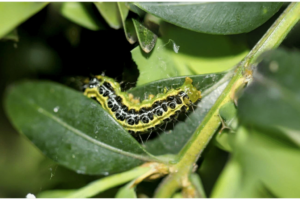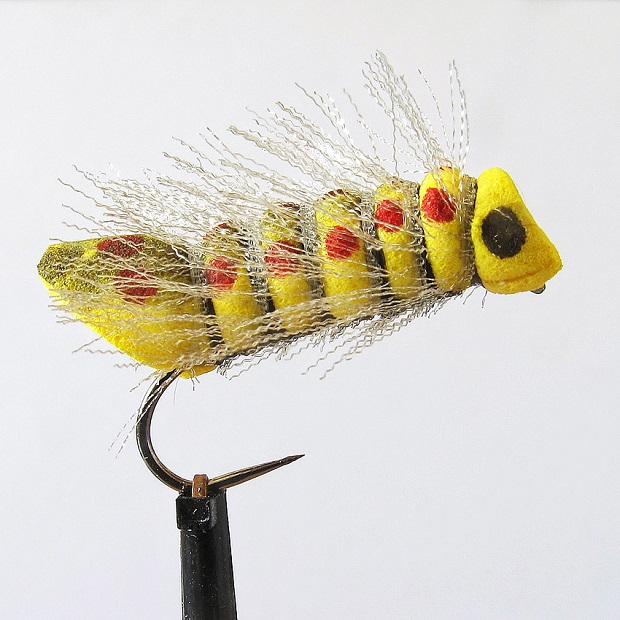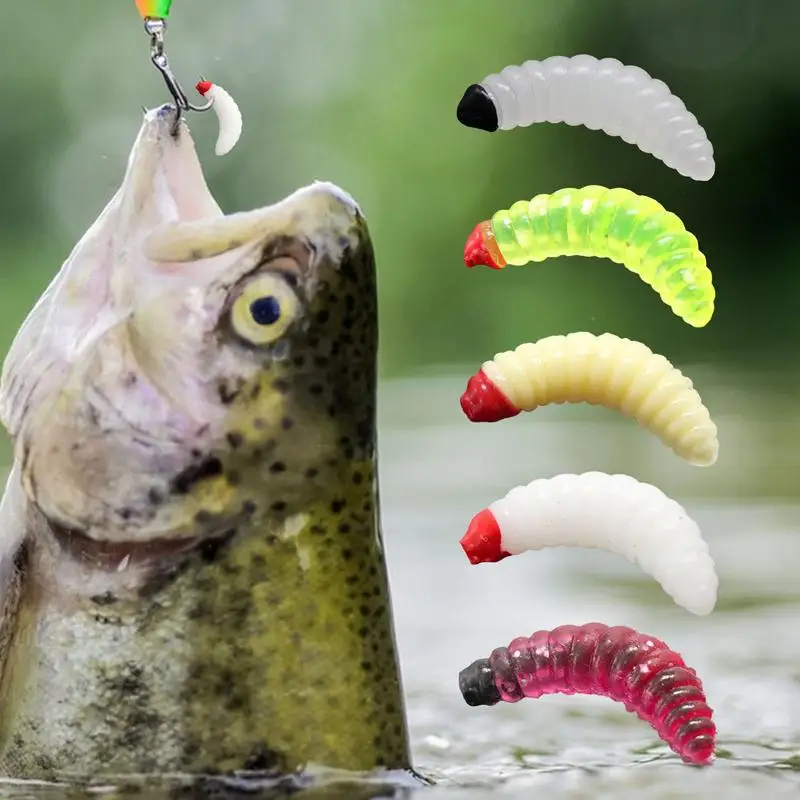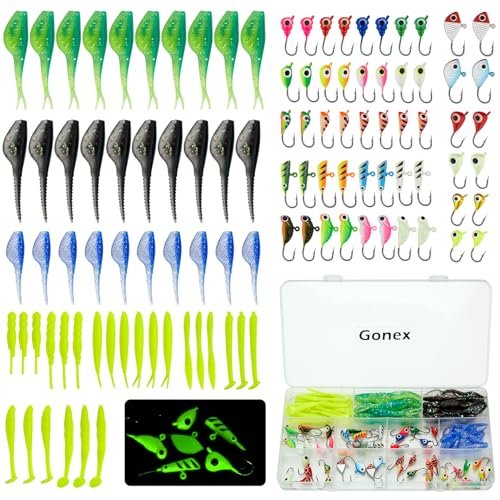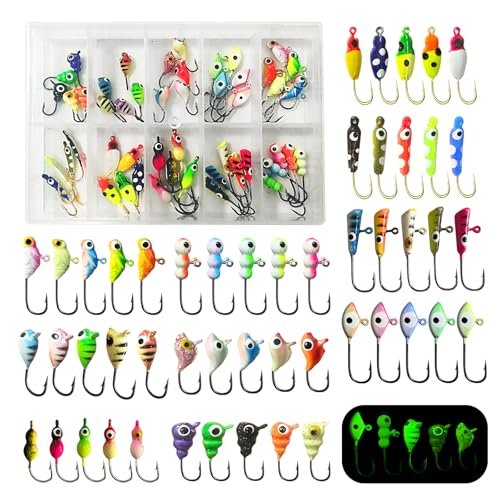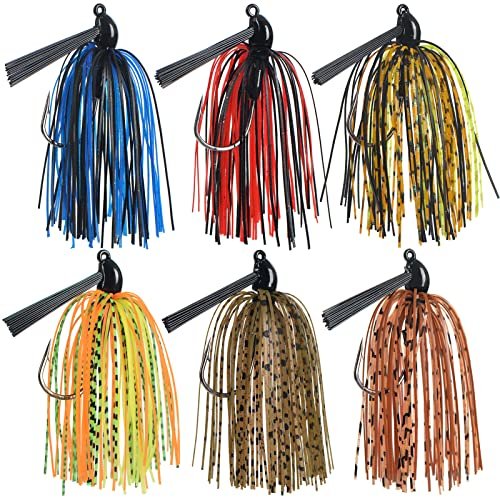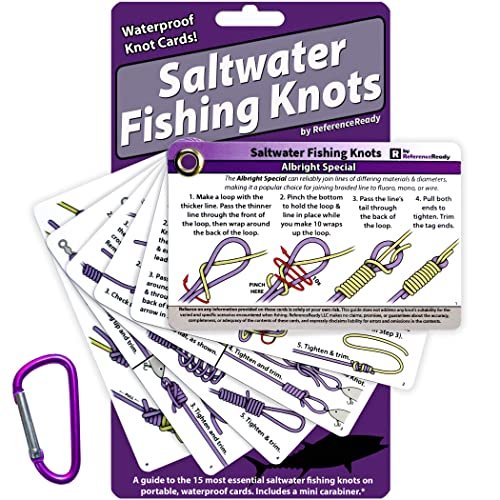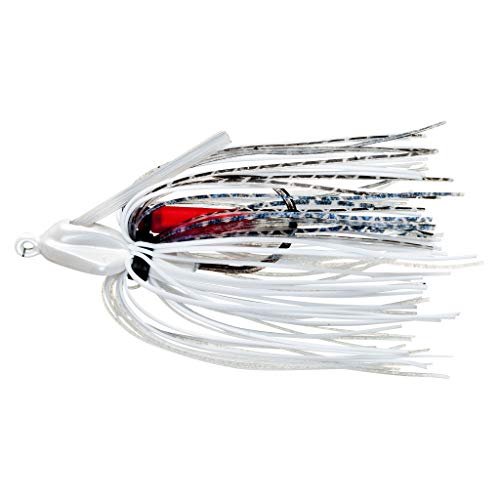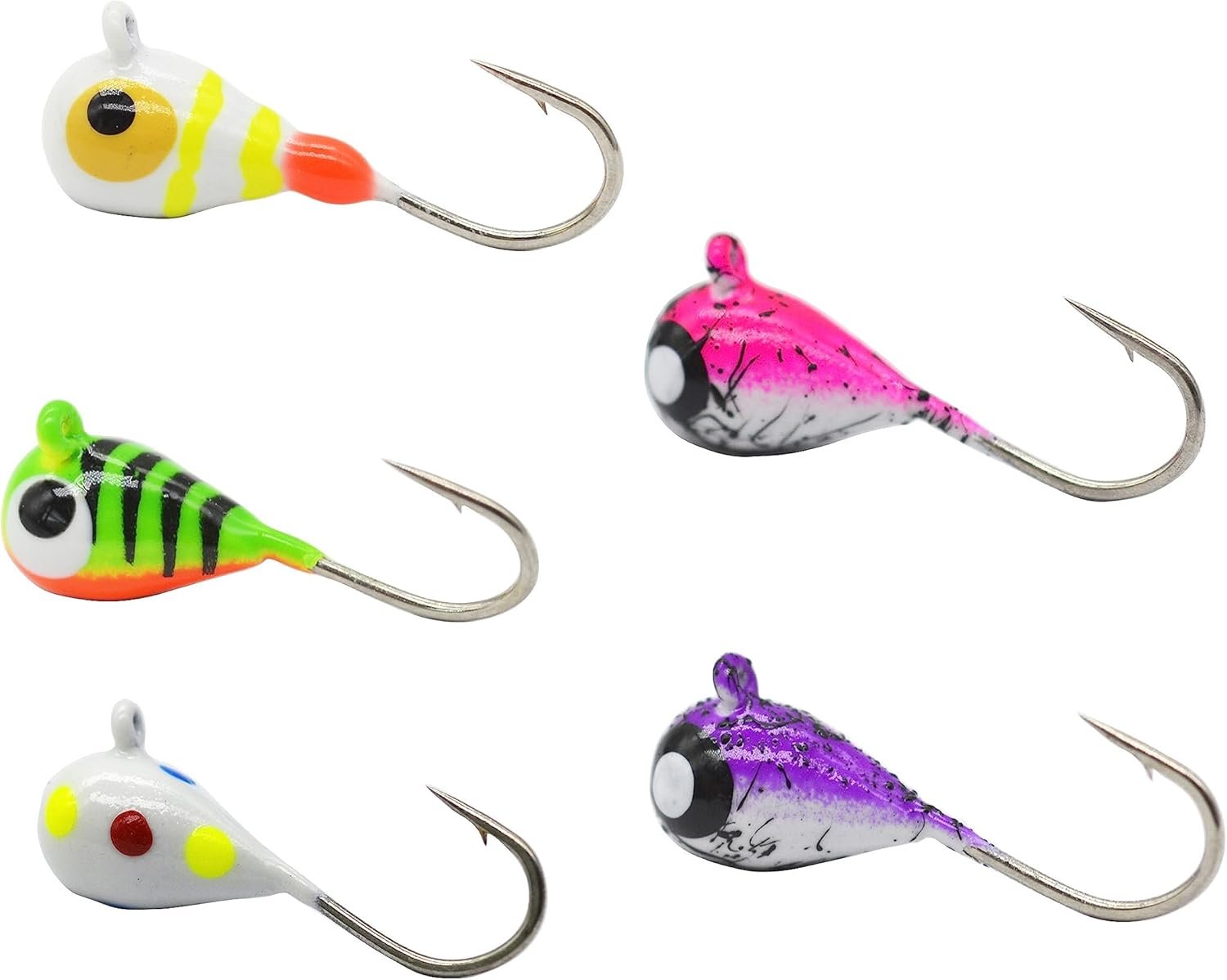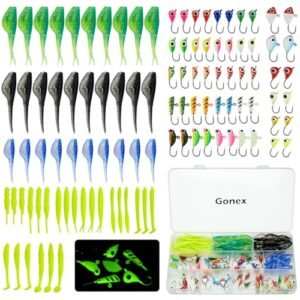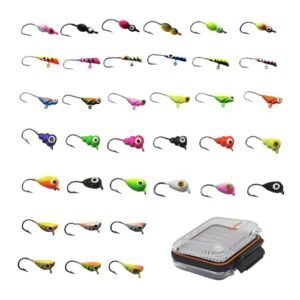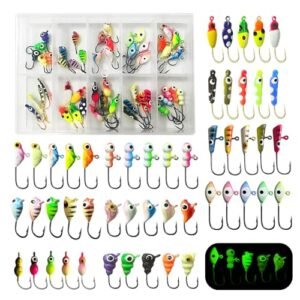Caterpillars, the larvae of butterflies and moths, have long been prized by fishermen for their enticing movement in water and universal appeal to fish. These live baits are known to trigger bites from both freshwater and saltwater species, making them a versatile choice for anglers.
The wriggling action of a caterpillar on a hook closely mimics the movements of many aquatic insects and small creatures that fish feed on, thereby increasing the chances of a successful catch. Using caterpillars as fishing bait requires careful hooking to keep them alive and active, ensuring they are irresistible to fish. This method of fishing can be particularly effective in calm waters where the natural movement of the bait can be easily noticed by fish.
Caterpillar Fishing Bait Unwrapped
Fishing enthusiasts often seek the magic edge to catch the big one. Caterpillar fishing bait might just be that secret weapon. Unwrapping the mystery, let’s dive into why these wriggly creatures can make your fishing trip a success.
The Secret Behind The Wiggle
Fish can’t resist the unique movement caterpillars offer. This natural motion mimics live prey, triggering an instinctive response from fish.
- Caterpillars squirm when submerged, attracting attention.
- Their vibrant colors often stand out in the water.
- Protein-rich, caterpillars are nutritious for fish.
Natural Vs. Artificial: A Comparison
| Natural Caterpillar Fishing Bait | Artificial Caterpillar Fishing Bait |
|---|---|
| Irresistible wiggle and texture | Engineered to simulate movement |
| Requires careful handling | Convenient and reusable |
| Varied colors and sizes | Colors and sizes customized to target species |
Whether you choose the squirm of a live caterpillar or the crafted wiggle of an artificial one, the aim is the same. Entice the fish with the promise of a tasty snack. Each has its place in the angler’s tackle box, ready to make that fishing tale a reality.
Hooking Techniques
Hooking techniques for caterpillar fishing bait are crucial for a successful catch. The right method ensures the bait remains alive and active, enticing fish. Different hooks and securing methods can make a significant impact on the movement and effectiveness of the bait. Mastering these techniques can transform an ordinary fishing trip into an extraordinary one.
The Art Of Securing Caterpillars
Securing caterpillars onto a hook requires gentle hands and a strategic approach. It’s important to avoid harm to the caterpillar while ensuring it stays on the hook. Here’s a simple guide to get it right:
- Choose the right hook size – Small to medium hooks work best.
- Handle with care – Caterpillars are delicate, so be gentle.
- Hook through the ends – Pierce either the head or tail end to keep it alive.
- Avoid the center – This can kill the caterpillar and reduce movement.
Maximizing Movement On The Hook
Movement on the hook is key to attracting fish. To maximize the caterpillar’s movement, follow these tips:
| Technique | Outcome |
|---|---|
| Loose hooking | Allows natural wriggling and attracts attention. |
| Double hooking | Secures the caterpillar for an active presentation. |
| Balanced placement | Ensures the bait does not spin unnaturally in the water. |
Test the setup before casting to make sure the caterpillar moves naturally. Adjust the hook as needed for the best results. Remember, a lively bait is an irresistible bait!
Species Specifics
Fishing enthusiasts often seek the most effective bait for their target species. Caterpillars, a lesser-known choice, serve as an intriguing option. These wriggly larvae can entice a variety of fish, thanks to their natural movement and nutritional value. Understanding which caterpillar works best for specific fish can transform an average fishing trip into a bountiful catch.
Target Fish For Caterpillar Fishing Bait
Caterpillars are not a one-size-fits-all bait. Different species of fish respond uniquely to these wriggling morsels. Let’s explore the top catches you can expect when using caterpillar fishing bait:
- Trout: Often found in freshwater streams and lakes, trout can’t resist the squirm of a caterpillar.
- Bass: Both smallmouth and largemouth bass view caterpillars as a tasty snack.
- Panfish: Bluegill and crappie are known to bite on caterpillar bait due to its enticing action underwater.
Caterpillar Varieties And Their Best Catch
Not all caterpillars are equal in the eyes of fish. Here’s a quick guide to pairing caterpillar varieties with the fish they attract best:
| Caterpillar Type | Best for Catching |
|---|---|
| Green Inchworm | Trout, Panfish |
| Hawk Moth Larvae | Bass |
| Monarch Caterpillar | Large Panfish |
Selecting the right caterpillar species can make all the difference. Remember to handle them with care to preserve their appealing wriggle!

Location Matters
Location Matters in choosing the right bait for fishing. Different places need different baits. Here’s how to choose the best caterpillar fishing bait for freshwater and saltwater fishing.
Freshwater Finesse
Using caterpillars as bait in freshwater is very effective. Freshwater fish like trout and panfish love caterpillars. Here’s how to use them:
- Pick the right size: Smaller caterpillars are perfect for small fish.
- Use lively caterpillars: Active bait attracts more fish.
- Hook them gently: Hook through the back to keep them alive longer.
Fish near logs and leaves. That’s where fish expect to find caterpillars.
Saltwater Strategies
Caterpillars are not common in saltwater fishing, but they can surprise you. Here are some tips:
- Try coastal areas: Fish in spots where freshwater meets saltwater.
- Use as a teaser: Combine with other baits to attract curious fish.
Always check local rules. Some places have specific bait regulations.
Remember, the right bait makes all the difference. Choose wisely based on your fishing location!
Seasonal Success
Caterpillar fishing bait thrives with the rhythms of the seasons. Anglers who understand these patterns can enhance their catch rates. Let’s dive into how caterpillars can be your secret weapon throughout the year.
Spring And Summer Surges
As nature awakens in spring, so does the appetite of fish. Use caterpillars to mimic natural prey.
- Fish activity increases with warmer waters.
- Caterpillars are abundant; easy to collect or purchase.
- Match the hatch by using local caterpillar species.
Summer offers peak activity, with long days and high metabolism in fish.
- Surface fishing excels with caterpillar bait.
- Vibrant colors of caterpillars attract curious fish.
- Vary your retrieval speeds to mimic live caterpillars.
Fall And Winter Wins
As temperatures drop, caterpillar fishing bait still secures catches. Fish stock up for winter.
- Slower metabolism in fish calls for patient techniques.
- Sink your bait to reach lethargic fish.
- Preserved caterpillars are effective in colder months.
Winter fishing can be challenging, but caterpillar bait stands out amidst scarce food.
- Ice fishing benefits from caterpillar bait’s unique movement.
- Use smaller caterpillars for finicky winter fish.
- Dark colors work well in clear, cold water.
Preservation Tactics
When it comes to fishing, using live caterpillars can be a game-changer. Keeping your bait in prime condition is crucial for enticing those trophy catches. Let’s explore some effective preservation tactics that will keep your caterpillars alive and wriggling, ready for your next fishing adventure.
Keeping Bait Alive And Wriggling
Ensuring your caterpillars remain lively is essential. Here’s how to maintain their vigor:
- Moisture: Keep them in a container with damp soil or paper towels.
- Aeration: Use a container with air holes for breathability.
- Food: Provide fresh leaves or bran for nutrition.
- Temperature: Store them in a cool, shaded area.
Long-term Storage Solutions
For those planning longer fishing trips, consider these storage solutions:
- Refrigeration: Place caterpillars in a fridge within breathable containers.
- Controlled Environments: Use commercial bait keepers with temperature regulation.
- Freezing: For dead bait, freezing is an option. Seal in plastic bags.
Environmental Considerations
Using caterpillars as fishing bait raises important environmental considerations. We must consider how this practice affects nature. Let’s explore how to use caterpillars responsibly and understand their impact on local ecosystems.
Sustainable Baiting Practices
Choosing sustainable baiting practices is crucial for protecting our environment. Here are some effective ways to ensure that using caterpillars as bait remains eco-friendly:
- Source locally: Use caterpillars found in your fishing area to avoid disrupting other ecosystems.
- Avoid overharvesting: Collect only as many caterpillars as needed to prevent population decline.
- Educate yourself: Learn about the species of caterpillars that are safe and beneficial to use as bait.
Impact On Local Ecosystems
The use of caterpillars as fishing bait can also impact local ecosystems. Understanding these impacts helps in making informed decisions:
| Impact Type | Description |
|---|---|
| Population Control | Removing too many caterpillars can reduce their population significantly. |
| Species Disruption | Using non-native caterpillars can introduce new species that disrupt local wildlife. |
| Ecological Balance | Each species plays a role in their habitat; removing them can harm this balance. |
By understanding and addressing these issues, anglers can help preserve the delicate balance of our ecosystems while enjoying their fishing activities.
Angler Anecdotes
Welcome to our “Angler Anecdotes” section, where the whispers of rivers and murmurs of streams bring tales of triumph and learning. Caterpillar fishing bait has long been a secret weapon for many anglers. Here, we share true stories from those who’ve cast their lines with these wriggly wonders.
Success Stories From The Field
Anglers worldwide cherish the thrill of a successful catch. Caterpillars, with their lively wriggles, entice fish like magic. Let’s delve into some remarkable success stories.
- John’s Record Bass: On a serene morning, John used a green caterpillar. His line tugged, heart raced, and he reeled in a bass that tipped scales and broke his personal record.
- Emma’s First Tournament Win: Emma, a novice, chose caterpillars over synthetic baits. The result? A surprising win against seasoned competitors, with a hefty trout that won her the prize.
- Grandpa Joe’s Old-School Trick: Using a caterpillar bait, Grandpa Joe outmatched the youngsters. His secret? A caterpillar’s scent and movement, irresistible to fish, handed down through generations.
Learning From Mishaps
Mistakes make for the best teachers, especially in fishing. Caterpillar bait, while effective, comes with its own set of lessons. Here are some anecdotes to learn from.
- Watch your Step: Sara learned the hard way when her caterpillar stash got crushed underfoot. Tip: Store them in a secure container!
- Caterpillar Choice: Not all caterpillars are equal. Tom discovered that the hard way when his bait was ignored all day. Lesson: Research and choose the right type for your target fish.
- Temperature Matters: Luke realized that on a hot day, his caterpillars became sluggish. The takeaway? Keep your bait cool for the best performance.
Tackle Tips
Welcome to the essential ‘Tackle Tips’ for using caterpillar bait in your next fishing adventure. Getting your gear right can make or break your fishing experience. Let’s dive into how you can optimize your tackle for caterpillar bait fishing.
Choosing The Right Gear
Fishing with caterpillars requires specific gear to ensure success. Focus on lightweight rods and fine line. This setup allows for delicate presentations, perfect for the subtle movement of caterpillar bait. Here’s a quick guide:
| Rod Type | Reel Type | Line Weight |
|---|---|---|
| Ultra-light | Spinning | 2-6 lbs |
| Light action | Baitcasting | 4-8 lbs |
Customizing Your Tackle Box
Your tackle box should cater to the unique aspects of caterpillar bait. Include small hooks, sizes #10 to #14. Add split shot weights to help your bait sink. Consider these must-haves:
- Bobbers for surface control
- Swivels to prevent line twisting
- Needle-nose pliers for hook removal
- Magnifying glass to inspect your bait
Customize further with plastic compartments or foam inserts. These keep your small items organized. For caterpillar bait, cool, aerated containers are crucial to keep them lively.
Legal Lures
Anglers know that the right bait can make all the difference. Caterpillar fishing bait stands out as a unique option. Yet, using live bait comes with rules. Let’s explore these guidelines to keep your fishing adventures fun and lawful.
Regulations On Using Live Bait
Fishing with live caterpillars requires knowledge of regulations. These laws protect local ecosystems. They ensure fish populations remain healthy. Here’s what you need to know:
- Species Restrictions: Some caterpillars might be invasive or harmful. Check which species are safe to use.
- Quantity Limits: Areas may limit how many live baits you can carry. This prevents overfishing.
- Permit Requirements: You might need a permit. This depends on the location and type of fishing.
Navigating State And Local Fishing Laws
State and local laws vary widely. They can be complex. Here’s how to stay informed:
- Consult Wildlife Agencies: State wildlife agencies provide up-to-date information. They offer regulations on using live bait.
- Check Online Resources: Many states have online portals. These list current fishing regulations. They are user-friendly.
- Local Bait Shops: Bait shop staff are knowledgeable. They can offer guidance on local rules.
Remember, rules change with time. Always double-check before your fishing trip. Stay responsible and enjoy the waters!
Diy Caterpillar Farming
Embrace the art of ‘DIY Caterpillar Farming’ and never run out of fishing bait again. This guide will show you how to set up a productive caterpillar habitat right in your backyard. With these simple steps, you can ensure a steady supply of live bait for your fishing adventures.
Setting Up Your Own Bait Garden
Creating a caterpillar-friendly environment is the first step to a successful bait garden. Follow these tips:
- Select a sunny spot protected from strong winds.
- Choose host plants that caterpillars love, like milkweed and dill.
- Use organic soil to avoid harmful chemicals.
- Keep the garden moist but not waterlogged.
- Include shelters like leaves and branches for protection.
Breeding And Harvesting Best Practices
For a thriving caterpillar farm, adhere to these breeding and harvesting guidelines:
- Maintain plant health for continuous food supply.
- Monitor for diseases and pests regularly.
- Handle caterpillars gently when moving them.
- Harvest caterpillars when they are sizable but before pupation.
- Store harvested caterpillars in a cool, ventilated container.
Fishing Etiquette
Understanding fishing etiquette is essential for a great experience. It’s about respecting nature, fellow anglers, and the sport itself. Whether you’re using caterpillar fishing bait or any other type, follow these guidelines to ensure a harmonious atmosphere by the water.
Respectful Casting
When you’re out fishing, it’s important to cast your line with care. Avoid tangling with others and make sure to keep a safe distance. Take a quick look around before you cast. This ensures everyone’s safety and enjoyment. It’s not just polite; it’s a must for a good fishing experience.
Sharing Spots And Success
- Take turns: If a spot is popular, share it. Don’t overstay your time.
- Be generous: If you’ve had success, let others try their luck too.
- Offer help: New anglers might appreciate tips on using caterpillar bait.
Remember, fishing is a shared passion. Celebrate each other’s catches and create a friendly environment for all.
Frequently Asked Questions
Do Caterpillars Make Good Fishing Bait?
Yes, caterpillars serve as effective fishing bait due to their natural movement and soft body, which attract fish.
What Tree Has Worms For Fishing?
The catalpa tree is known for hosting worms, specifically catalpa worms, which are excellent for fishing bait. These trees attract fishermen seeking natural, effective bait.
What Fish Eat Worms As Bait?
Many freshwater fish species, including bass, catfish, trout, and panfish, readily consume worms as bait. Worms effectively attract these fish due to their natural presence in aquatic environments.
What Is The Best Worm Bait?
The best worm bait typically includes live nightcrawlers, garden worms, and red wigglers. These attract fish due to their natural movement and scent.
Conclusion
Experimenting with caterpillar bait can transform your fishing experience. These natural lures are not only effective but also sustainable. Give them a try on your next fishing trip and see the difference for yourself. Embrace the adventure and enjoy the thrill of catching more with caterpillar bait! Happy fishing!


